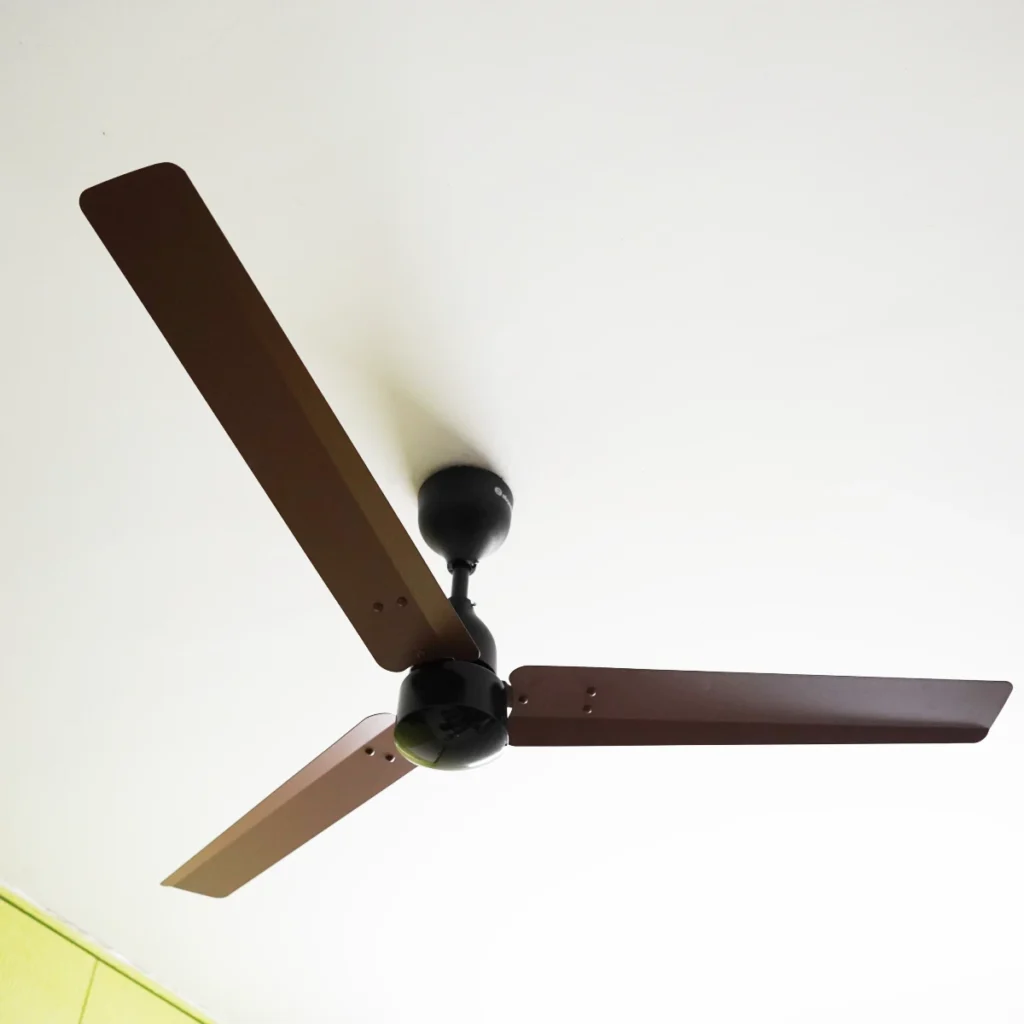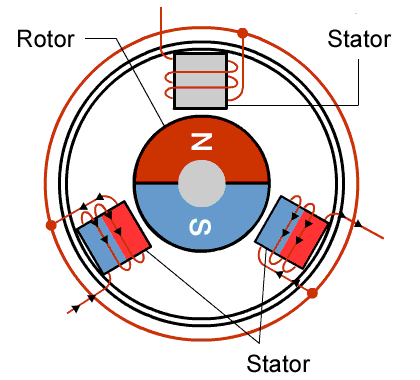Like any typical Indian household, electricity bill payment is crucial to our monthly expenditure. So, any endeavor towards reducing our monthly expenses entails reducing our power consumption bills. We discovered that Ceiling fans contributed significantly to our power bills. Therefore, we decided to replace all our existing ceiling fans with Atomberg Renesa BLDC fans. Here is our story of saving Rs 6K annually using BLDC fans.
The Background

Our home has five ceiling fans that run continuously for ten hours daily on average. Usually, our fans run at the maximum speed, where they consume 75 watts of power. So, we used the ceiling fan power consumption calculator to calculate the overall power consumption.
For our calculations, we have assumed the following.
- Rated power of the ceiling fan – 75 watts
- Hours of operation daily – 10 hours
- Electricity Tariff in our city – Rs 7.50 per unit
According to the calculator, one ceiling fan’s energy consumption is as follows.
| Daily units consumed | Monthly Units consumed | Monthly Electricity bill | Annual units consumed | Annual Electricity bill |
|---|---|---|---|---|
| 0.75 | 22.50 | Rs 168.75 | 270 | Rs 2,025 |
Since we have five ceiling fans, our monthly and annual consumption is as follows.
Monthly consumption – Rs 843.75
Annual consumption – Rs 10,125.00
That is a significant power consumption figure. Therefore, we decided to switch to BLDC fans and reduce power consumption. So, we replaced the existing ceiling fans with five Atomberg Renessa BLDC ceiling fans, each costing around Rs 3,580.00.

Our total investment in these fans was Rs 17,900. In contrast, five regular ceiling fans (Usha) cost Rs 1,599 per piece. (Cost of 5 fans – Rs 7,995) So, the initial upfront cost difference was around Rs 9,905.
Let us now consider the power consumption because of Atomberg Renesa BLDC fans.
- Rated Power of one Atomberg Renesa BLDC ceiling fan – 28 watts at Speed 5 and 35 watts at Boost Speed.
- Hours of operation – 10 hours per day on average
- Electricity Tariff in our area – Rs 7.50 per unit.
The energy consumption of one Atomberg Renesa BLDC ceiling fan is as follows.
| Speed | Daily units consumed | Monthly Units consumed | Monthly Electricity bill | Annual units consumed | Annual Electricity bill |
|---|---|---|---|---|---|
| 5 | 0.28 | 8.40 | Rs 63 | 100.80 | Rs 756 |
| Boost | 0.32 | 9.60 | Rs 72 | 115.20 | Rs 864 |
Therefore, the total energy consumption for five BLDC fans is as follows.
- At Speed 5 – Rs 3,780
- At Boost Speed – Rs 4,320
Let us compare our monthly and annual savings using BLDC ceiling fans. These figures are for five ceiling fans.
| Type of ceiling fan | Monthly Electricity bill | Annual Electricity bill | Difference |
|---|---|---|---|
| Regular | Rs 843.75 | Rs 10,125 | – |
| BLDC – Speed 5 | Rs 315 | Rs 3,780 | Rs 6,345 |
| BLDC – Boost Speed | Rs 360 | Rs 4,320 | Rs 5,805 |
Hence, we have saved Rs 5,805 annually if we use the BLDC fans at Boost Speed. The savings amount to Rs 6,345 annually if we use them at Speed 5.
Let us now see how much time it takes to recover the initial additional cost of investing in BLDC ceiling fans.
- The total upfront cost difference for five BLDC fans – Rs 9,905.
- Hence, we recovered the cost difference within one and a half years.
In this way, we save considerable cost by replacing the existing ceiling fans with BLDC ceiling fans. We have considered an average usage of 10 hours daily, resulting in savings of nearly Rs 6,000. But, if the average usage increases to 15 hours daily, our annual savings can increase to Rs 9,000. Accordingly, you can calculate the actual savings in power consumption.

Let us now see why BLDC fans are the future.
Electricity consumption charges have skyrocketed through the roof. Besides, we use a plethora of electrical equipment in our homes, including Air Conditioners, refrigerators, water purifiers, vacuum cleaners, microwave ovens, lights, and ceiling fans. Power conservation is the need of the hour.
While we have inverter technology in refrigerators and ACs that help reduce power consumption, BLDC technology is best suited for ceiling fans. Our case study shows that consumers can save up to Rs 6K per annum on power consumption if they replace their existing ceiling fans with BLDC fans.
BLDC ceiling fans have an edge over conventional ceiling fans in various aspects. Let us discuss them in brief.

Power savings – We have already seen how BLDC technology saves considerable power with consistent usage. On average, replacing one regular fan with a BLDC fan can save up to Rs 1,200 annually on power savings. The higher the BLDC usage, the more the savings.
Sustainable – BLDC ceiling fans work on brushless motor technique, which reduces the carbon footprint, contributing to a greener and more sustainable world.

Flexibility – Depending on the model, BLDC ceiling fans can work at varying input voltage ranges from 100 V to 300 V. Hence, they perform better when working with home inverters. Regular ceiling fans cannot work at extreme voltage fluctuations.
Less Noise – We have consistently used BLDC fans for over six months and found that they make less noise than conventional fans when working at varying speeds. The Atomberg Renesa has noise levels of around 65 dB, whereas conventional ceiling fans have noise levels of around 75 dB.

Remote Control operations – Regular ceiling fans require regulators to control their speed. BLDC ceiling fans can be controlled using remote-control units. These remote-control units have unique features like Boost Speed, Sleep Mode, etc., to enhance your comfort and convenience levels. Other benefits include the facility to pair with multiple BLDC fans. Besides, there is no need to point the remote towards the fan for its functioning.

Durability – BLDC motors are more durable and robust than conventional ceiling fan motors. The brushless motors work longer because there is no friction involved. So, no wear and tear is involved, leading to extended longevity. Similarly, there are fewer chances of spark issues and blowing out with BLDC motors. Hence, most BLDC ceiling fans have extended warranties.
Aesthetic appeal – People generally look for attractive designs when choosing ceiling fans. BLDC fans have better aesthetic appeal than conventional ceiling fans, with features like attractive colors, LED illumination, chandeliers, etc. These features enhance the room’s ambiance, make the fans look charming, and add to the aesthetic appeal.
Therefore, more consumers are switching to BLDC ceiling fans by replacing their conventional ones. So, BLDC ceiling fans are the future of India.
